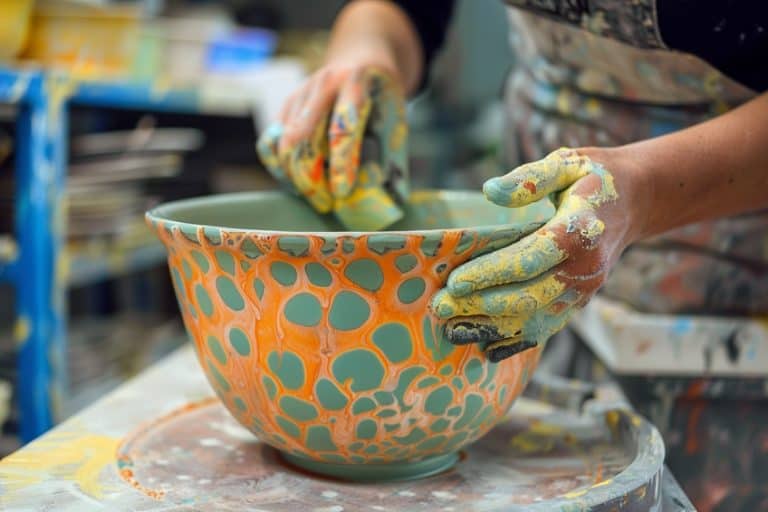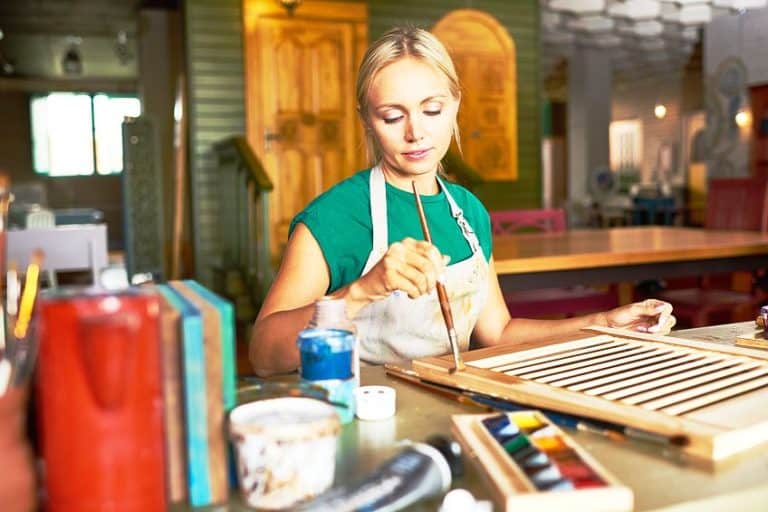What Is a Fashion Designer? – From a Sketch to the Runway
Are you a creative person and interested in the fashion design industry, but are not sure if it is the right choice? There are many opportunities that range from designing clothing, accessories, or footwear, to working for an apparel company or even starting your own company! So, what do fashion designers do? To help you understand the answer to this question so that you can make an informed decision, we have gathered together all the information you might need.
Table of Contents
What Is a Fashion Designer?
The job of a fashion designer is to create a specific aesthetic look, which can include choosing the proper fabric, creating the shape of a garment, and many other aspects. What is fashion design? The fashion designer comes up with an idea and then creates a sketch or design. The specifics of how this is done depend on the designer, but in many cases, there are many involved in the process, from patternmakers to finishers. However, a fashion designer needs to be able to follow through with the entire process themselves as well. They also often use specialized design software and collaborate with different designers on a task.
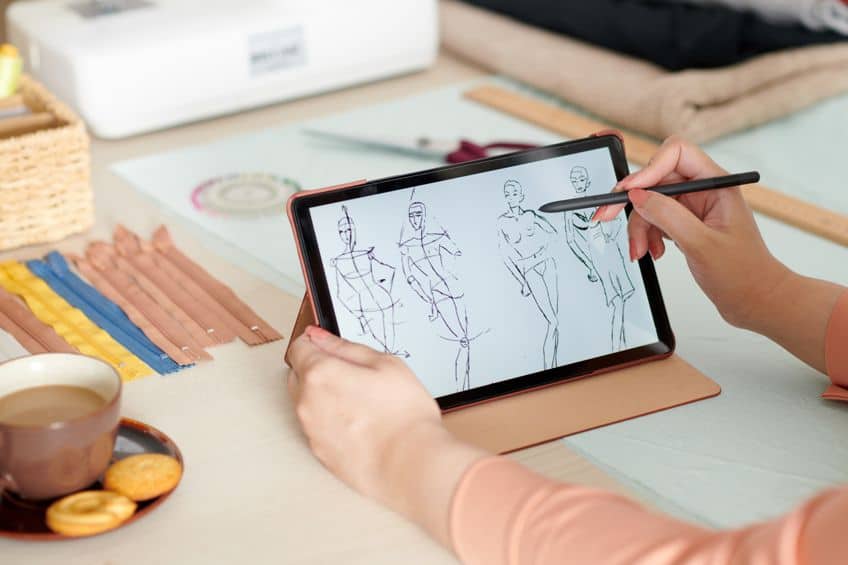
The various fashion designs are influenced by many things like different trends and cultures. Ideas are also shaped by a designer’s knowledge of styles, textiles, and their own artistic vision. The design ideas can include everything, from different types of dresses, skirts, pants, shirts, and jackets, as well as accessories, such as footwear and handbags. A fashion designer can specialize in clothing, or even go into jewelry design, or many other areas in the fashion design industry.
What is fashion designing? This question can involve more than just thinking up an idea. Besides focusing on designing, being a fashion designer also involves many other skills, such as marketing, sales, and insight into how to run a business. Many fashion designers begin by getting a bachelor’s degree in fashion design, which can help to prepare an individual for various career possibilities.
Let us have a look at a few of the basic skills required for fashion designing.
Skills Required for Fashion Design
There are many skills needed to develop into a successful fashion designer. For one, you would need to be able to visualize your thoughts and convert the ideas into physical items. Fashion designers need to visualize single clothing items, or take it further, entire fashion shows, before creating the garments that will be used.

In many cases, fashion designers will need to have a willingness to travel frequently to go to fashion shows or meet clients. The fashion design world is fast-paced and challenging, and a fashion designer needs to be able to handle competition and reviews. There will be many difficulties and distractions, so persistence, commitment, and believing in yourself are important. If you want to become a famous fashion designer, you will also need good communication skills, interpersonal skills, and confidence in following your vision. Below are a few more skills you might need as a fashion designer.
Fashion Designing and Color Theory
What do fashion designers do? One of the things a fashion designer must understand is colors that help to bring a design to life. Using colors incorrectly can also ruin a design, which will lead to unsold items. As a designer, you must understand color theory and which colors go well together.
There is also various color terminology the fashion industry uses, for example, you should know your warm from cool colors, which colors are complementary, and which colors work best together, among others.
A good knowledge of color theory also provides a foundation to begin designing, making sketches, and using fashion Illustrator software. You can learn the theory of color, however, to really gain an understanding, it is best to experiment and practice. Mix colors and fun designing and coming up with different colorful ideas. You will soon discover which ones work, and which designs, and color combinations do not.
Fashion Designing and Fabric Selection
Since a fashion designer will be working with a variety of fabrics and textiles, this is an area where you need to know what is what. The type of fabrics selected will depend on the style you are going for. Sometimes, you may even have a variety of materials across a design collection. A lot of research is usually done on the different styles and fabrics used. If using a clothing manufacturer, it is important to get a fabric swatch book to evaluate the options.

Each material has different textures, so it is important to know how these fabrics can work together. Some of the potential challenges you might face include the durability of the fabric and if the fabric has been ethically sourced. Some of the fabrics a fashion designer can encounter include the following.
- Brocade
- Chambray
- Chiffon
- Cotton
- Damask
- Denim
- Flannel
- Gingham
- Leather
- Silk and satin
Technical Proficiency
If you are serious about becoming a fashion designer, you will need to develop certain technical abilities, such as sketching, pattern making, illustration, and draping. You will also need to learn to use computer programs, have hand sewing skills, as well as your fabric knowledge. Computer knowledge is important because many of the designs are created using a fashion design program. However, other more common computer programs and software will also be used to create things like websites, flyers, and presentations.
Fashion designers also have basic drawing and sketching skills, which are vital in the initial phase of the design process.
All fashion designers also need to be comfortable with sewing machines or providing items that have been hand-sewn. This means understanding all basic sewing skills, such as how to add a zipper or button. Appropriate threads, needles, and machine settings must be chosen for designs. Ultimately, a fashion designer must know how to create a garment from choosing the materials, to creating the pattern and garment construction.
Business and Marketing Acumen
If you are aiming to work as an independent fashion designer, you will also need to know how to run a business. Besides all the creative skills required to become a fashion designer, you need to gain business skills, such as marketing and budgeting. Eventually, once you have built your business, you can consider hiring other team members to take over these types of roles. You will need to learn how you can build your brand, and how to successfully promote your fashion line. This means understanding what consumers want and always having your finger on market trends. As your team grows, you will need to develop leadership skills to be able to manage people and keep everyone focused on your vision. Other skilled people you may have to work with include design assistants, administrative assistants, and even interns.

Project Management Skills
When a fashion designer is planning a major fashion project, like producing a large order or developing a runway fashion show, it is important to have successful management strategies. These can include learning how to assign tasks, being good at solving problems and making decisions, committing to a realistic deadline, and being able to use project management software to help monitor the process.
This will also include having adequate time management skills.
The fashion world can be stressful, and there will be many occasions when you will need to produce work within a limited time. This means developing good time management skills, where you will know how to prioritize tasks and delegate where necessary. You will also learn how to estimate how long a task will take to complete and monitor productivity among all those involved in a project.
Being Able to Adapt
Fashion designers may find themselves in unpredictable situations. They must be able to adapt and make spur-of-the-moment decisions. This could mean being able to alter dresses if needed, step in and do make-up, or manage various challenges on the go.

Fashion Design Specializations
There are quite a few areas where a fashion designer can specialize, from working independently to working for fashion brands in the wholesale and retail industries. Many of these well-known fashion brands showcase a trend or theme, and designers must come up with a fashion line or collection. Many of these pieces are displayed during Fashion Week in places like Milan, Paris, London, and New York. Quite a large percentage of fashion designers take the freelance route, where they are contracted to produce fashion items.
Others launch their own clothing brand and create custom outfits. Below you will find some of the types of fashion designers you can get.
Clothing Items
This is a broad option that can also have other specialty clothing items as well. The focus is on creating a variety of clothing items for consumers. This could be clothing items for celebrities or work uniforms. Since this is such a broad field, many fashion designers focus on a specific type of clothing item, see some specialty ideas below.
- Bridal wear
- Children’s wear
- Evening wear
- Lingerie
- Maternity wear
- Men’s wear
- Sportswear
- Women’s wear
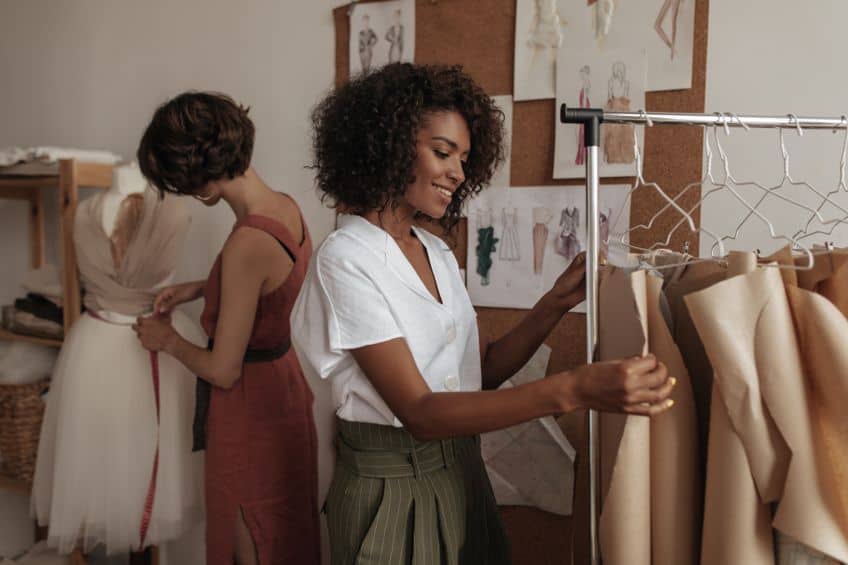
Haute Couture
Then you also get haute couture or designer clothing. The definition of designer clothing is simply clothing that is usually of high quality. Also, this type of designer clothing is produced by a famous fashion designer, which also makes the clothing items quite expensive. Fashion designers who offer this type of clothing, also typically provide it to wealthier clients.
Often, measurements are taken, custom outfits are designed, and often create items that are done according to the client’s specifications.
Ready-to-Wear
This type of fashion designer creates clothing for groups of people or clothing collections. The items created are more affordable than the couture items and do not usually require many alterations, Most of the clothing items are based on trends or couture versions. You also have the mass market items that are purchased at most retail stores and are ready-to-wear, which are made in textile factories.

Limited Edition
These fashion designers create items for people who want something a little more exclusive, which can include clothing and other accessories. These items are made to high standards but are less expensive than your couture items. So, you are getting something more exclusive that can be customized, if necessary but is only slightly more expensive than the mass-produced clothing items.
The number of items is also produced in lesser quantities, hence the limited edition label.
Eco-Fashion
These are fashion designers who are environmentally conscious and produce clothing items that are stylish, affordable, trendy, and eco-friendly. The materials are ethically sourced, and clothing items are made for those who are more socially conscious and want to make more informed decisions when purchasing clothing items.
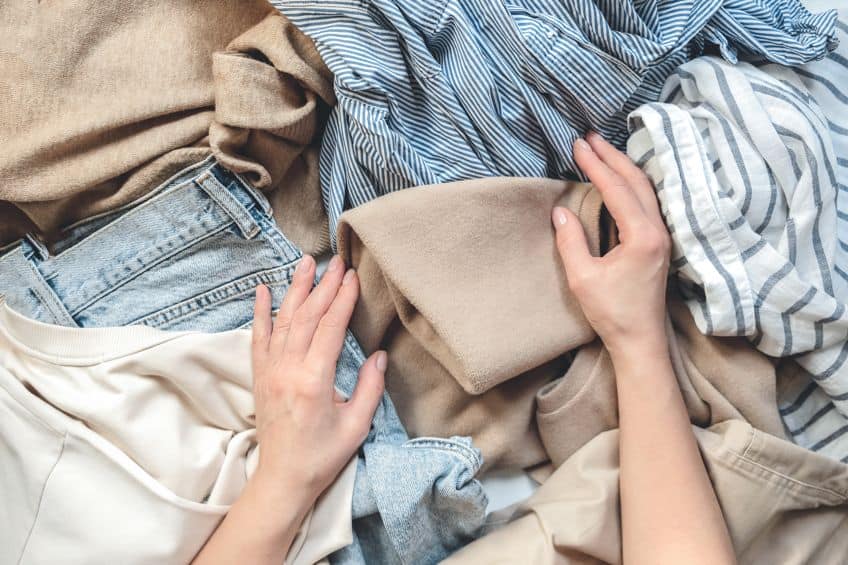
Costume Designers
When considering what is fashion designing, it can also involve other more unique specializations. Costume designers specialize in creating outfits for theater, television, and movie productions. There is a lot of research that goes into designs, as the clothing items must match the period or theme of the production.
This can be challenging sometimes, as the designers have to stay within a given budget, which can give them the freedom to work and create anything, or on a lower budget, to come up with more creative ideas.
Accessory Designers
In this category, you can get a variety of options from jewelry, scarves, belts, and handbags to eyewear and hats. Fashion designers who focus on these types of item accessories help to create designs that are fashionable and go well with various outfits, enhancing the overall look.

Footwear Designers
Besides clothing items, you also have a variety of footwear options. Footwear designers can create items, such as sneakers or athletic footwear, high heels for evening wear, or casual footwear, among others. Footwear designs are made specifically according to comfort, function, and form. Those who work in this field must also follow fashion trends, to make sure the shoe designs will work with the trending clothing items.
This could also mean collaborating with clothing designers. Many footwear designers also offer custom items to individuals.
Fashion Design Process
The design process or responsibilities of a fashion design can vary depending on the type of fashion. So, you could have a few more steps included, or some may even be left out. However, there are some common things that most fashion designers are responsible for. Whether you are seeking to enter the field of fashion design or are simply curious, below is a brief look into the fashion design process.

Reviewing a Brief
This is one step you might not include if you are creating your own designs. However, a brief might be provided by a client or a manager to create a specific look. As a designer, the brief should be followed to meet the budget, values, and style of a specific brand or client.
The brief should contain everything needed to begin forming ideas and moving on to production.
Research and Inspiration
The fashion designer then needs to do some research, which includes current trends. Developing good research skills is what will help a designer create an outfit that is inspiring and fresh, but which also has a unique touch. To get inspiration, fashion designers can get ideas from their everyday lives. Inspiration can come from music, art, books, nature, and looking at other fashion-trending ideas. You can even go online onto platforms like Pinterest.

Sketching and Concept Development
Gather your ideas and allow your creativity to guide you. Create quick sketches of your design, and simple construction with ideas for types of materials, colors, and accessories. Here you will likely come across the word “croquis”, which is a quick sketch that shows a fashion figure and is created in minutes. There is usually more than one figure, each changing pose.
You can sketch your own, or there are also free templates available to download online.
Create a Mood Board
Once you have some ideas, you can try and organize all of the information. As you place everything on a mood board, you can then begin to link ideas, from themes and textures to patterns and colors. You can even create more than one mood board, and simply place ideas you do not want aside. A mood board can be either a physical creation or you can go digital. If you are looking to play with actual textures, for example, by adding material swatches, a physical mood board is best.

Sketching
Sketches are a great way to bring to life an idea and are the foundation a garment is created from. Sketches can help to communicate ideas and other technical data, such as seams, shape, and fit. The sketches will eventually become the blueprint for the outfit, where a pattern can be created. From the pattern, a prototype garment can be developed. Once you have narrowed down a design idea, you can then refine it, to create a formal illustration that will contain movement and color. You can also include fabric swatches you intend to use to make the garment.
Fashion designers can also use computer fashion design programs to then develop their sketches and ideas. You can use a technical designer for this, or you can learn the process yourself.
Fabric Selection and Material Sourcing
Fabric selection is vital, as it is the essence of your garment. So, selecting a fabric that expresses your ideas accurately is important. On occasion, it is the fabric that dictates the outfit idea, while at other times, the outline or “silhouette” of the outfit idea will be what determines the fabric type.
A fashion designer should understand the thickness, weight, and construction of the material, to better understand how the fabric will move, drape, and fit when wearing it. Other factors to look at include durability and cost of the material.

When selecting fabrics, color plays an important role as it helps to convey the mood you wish to set. The color is what somebody will initially see when they see your design. So, a fashion designer needs to choose an appropriate color palette, which is why learning color theory is important.
You will need to source your fabric, which can be done at trade shows or even online. You can shop around until you find what you want. You will need to look for an appropriate fabric supplier or fabric mill, however, you will also need to find a place where you can manufacture your outfits.
Pattern Making and Garment Construction
Once the fabrics have been selected, fashion designers then create a prototype of the outfit. This can be done by using different methods like draping or creating a flat pattern from scratch. The prototypes are mostly created by using cheaper materials like muslin. This material is used to test out the garment pattern before moving on to the final item. The prototype will be the first time a designer sees their creation in a three-dimensional form. From this, they can then revise and change things as they see fit.
The final outfit can now be assembled. The fashion designer must now determine things like the type of stitching, what types of buttons are needed, or the type of zipper. All these elements must work together to fit into the design theme.
Fittings and Alterations
Once the outfit has been finalized, often samples are created and many fashion designers use fashion models to help with visualizing their designs. This helps to see how the garment fits and moves on an actual person. Models also sometimes provide feedback on how the garment feels, its textures, mobility, and size. This information is then used to adjust the final item. If it is a private client, they would come in and alterations would be made.

Finalizing and Presenting the Collection
The outfit will then be finalized and ready for production. A fashion designer will oversee this process, to ensure quality standards are adhered to. To showcase the outfits, fashion shows and presentations are often held for the media as well as the public, or any potential buyer. These fashion events help to expose the designers and their brands.
There is also all the behind-the-scenes work that needs to be done. Fashion designers must meet deadlines, manage budgets, balancing creativity with business savvy to make sure that the designs are stylish and financially worthwhile.
The entire design process can vary according to specialty; however, it generally takes about six months from design concept to end production when looking at the release of spring and fall collections. Many companies can also release new designs each month. The internet and e-commerce now provide a popular new avenue for fashion designers, where they can sell directly to the public without needing a physical shop to showcase the designs.
Collaboration in Fashion Design
Over the entire fashion design process, fashion designers will most likely work with other professionals in the industry. Collaboration is important because if you partner with others that possess various skills, you achieve your tasks much quicker. You can also focus on what matters most to you, and you have somebody that can hold you accountable for things like time management and other tasks. Others can also help review the product, which can then produce a more accurate outcome. Many problems can also be solved much easier if collaborating with others. Some ideas for collaboration include some of the following.
- Art and fashion collaborations
- Collaboration with hair stylists and make-up artists
- Collaboration with models and photographers
- Collaborations with other fashion designers
- Collaborating with retailers and fashion brands
- Patternmakers
- Production partnerships
- Textile designers

When brand companies collaborate, they can create marketing campaigns that can benefit both parties and are quite profitable. For example, a brand can create an advertising campaign that includes wearing outfits that you have designed and appearing on Instagram and other platforms.
Influence of Fashion Designers on Popular Culture
Fashion has played a part in society for centuries, being something that was a display of social status in the past. As the years went by, with the development of newspapers and magazines, and now social media, television, and movies, fashion has become popular in our everyday lives. Fashion is a way that people can express themselves. Fashion has the potential to influence what we choose to wear and has a way of shaping society’s trends. Popular fashion trends are often associated with the Western world, however, do not forget that clothes can also tell us things about different cultures and heritages. Traditions can be handed down in families, keeping traditions of the way items are made.
Today, fashion is becoming more globalized, and designers are drawing inspiration from different countries around the world.
Fashion Designers in Film and Television
We are sure that you have seen a broadcast of celebrities walking down the red carpet for a movie premier or an awards ceremony. Red carpet and celebrity endorsements are quite popular, where a celebrity is asked to wear an outfit, which is then displayed for everyone to see. This type of endorsement can be a useful marketing resource for a clothing brand. Many famous fashion designers have also provided costume outfits that are worn on screen. An old classic example is Audrey Hepburn in Breakfast at Tiffany’s, where she is wearing the famed black dress that was created by Hubert de Givenchy.

Fashion Designers As Influencers on Social Media
Social media has provided a platform where anybody can become an influencer and is playing a large role in shaping fashion. Fashion designers can then determine and anticipate fashion behaviors and what people like or do not like. By understanding what customers want, designers can then steer them to their designs. Fashion designers can also use other established influencers or famous people to get their designs out there. For example, take a famous singer like Rihanna or Nicki Minaj, who wears unique clothing designs.
People who love their music will attempt to imitate the look.
Famous Fashion Designers and Their Contributions
There have been many famous fashion designers over the years, all providing their unique contributions to the fashion industry. Let us take a look at a few of the more well-known fashion designers that most people would recognize.
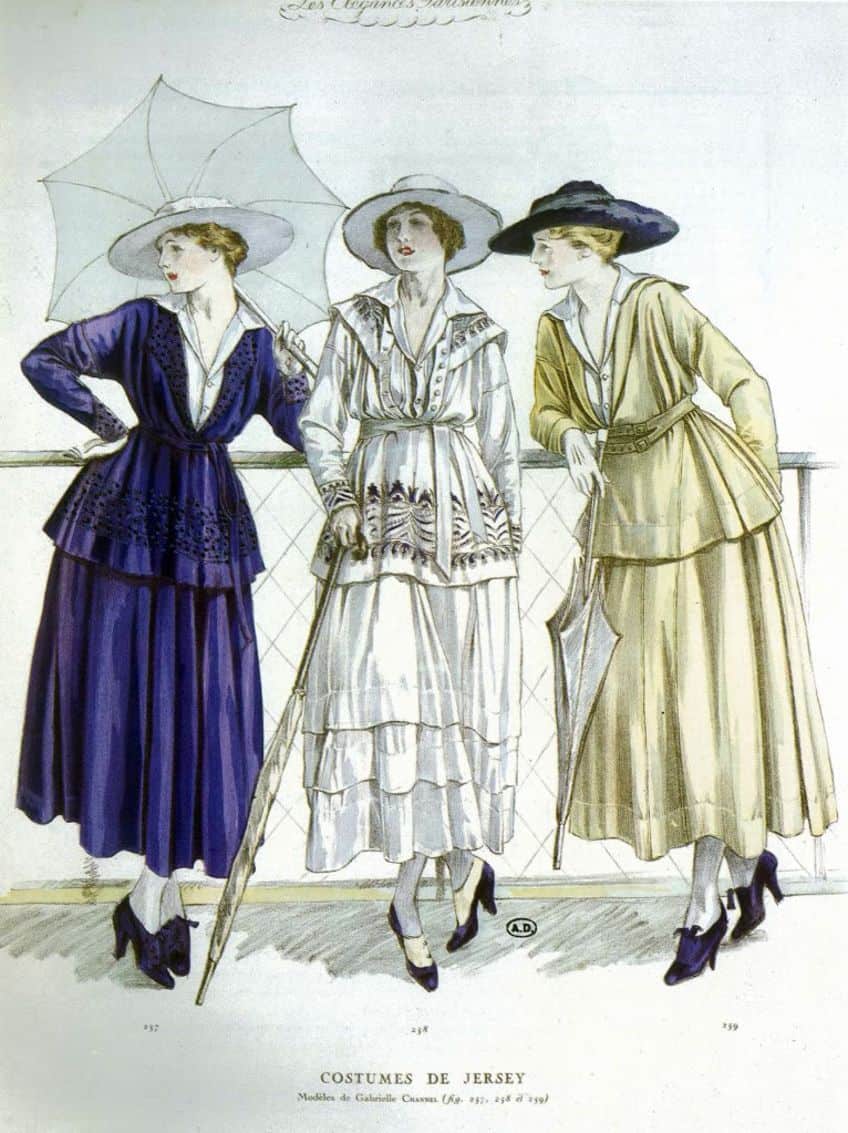
Coco Chanel
| Name | Coco Chanel |
| Date of Birth | 19 August 1883 |
| Date of Death | 10 January 1971 |
| Fashion House and Style | House of Chanel. Simple, elegant and timeless designs |
Coco Chanel (1883 – 1971) is a fashion designer we have all heard of, she was a French fashion designer that founded the popular brand, Chanel. She was known for developing designs that were practical and comfortable, yet elegant. She used unconventional methods and techniques that made her a successful independent businesswoman.
Some of her classic designs include the women’s suit and quilted purse, and “the little black dress”.
Giorgio Armani
| Name | Giorgio Armani |
| Date of Birth | 11 July 1934 |
| Date of Death | Current age: 89 years |
| Fashion House and Style | Giorgio Armani fashion house. Elegant and ready-to-wear |
Giorgio Amani (born 1934) is an Italian famous fashion designer known for his tailored suits and menswear collections. He created the brand “Armani” in 1975, and in 2001, he was named the most successful Italian designer. The brand has added new ideas to the range over the years including accessories, jeans, and a perfume line. He was also the first designer that has spoken out against super-thin models, changing the way body image is perceived. He maintains his position as one of the most iconic designers of his time.

Calvin Klein
| Name | Calvin Klein |
| Date of Birth | 19 November 1942 |
| Date of Death | Current age: 80 years |
| Fashion House and Style | Calvin Klein. Sophisticated styles for women and men |
Calvin Kline (born 1942), helped to bring American fashion to high levels with his chic designs. He founded his company in 1968, and since then, has added to many of his collections that focus on simple, yet fashionable clothing items from women’s and men’s wear to an underwear range.
The most well-known contribution is the designer jeans range developed in the 1970s.
Vera Wang
| Name | Vera Wang |
| Date of Birth | 27 June 1949 |
| Date of Death | Current age: 74 years |
| Fashion House and Style | Vera Wang. Iconic wedding dresses and luxury ready-to-wear collections |
Vera Wang (born 1949) first started off her career as a young editor for Vogue magazine. She only launched her fashion collection later at the age of 40. Since then, she has become a well-known fashion brand. She is mostly known for her elegant haute couture collections and wedding dresses.

More Famous Fashion Designers You Might Know
There is a long list of famous fashion designers, but here are a few of the more iconic designers that have contributed their fashion ideas to society. All of them contributed creative and unique designs that have become well-known across the world.
- Christian Dior
- Donatella Versace
- Donna Karan
- Karl Lagerfeld
- Pierre Cardin
- Ralph Lauren
- Vivienne Westwood

Fashion designers need to develop a variety of skills, and usually also need to have a certain amount of creativity or artistic talents. If you have a passion for clothing and design, and you are willing to work hard, then entering the fashion industry can lead to a rewarding career!
Frequently Asked Questions
What Is a Fashion Designer?
Fashion designers come up with ideas for creating various fashion items, from clothing collections to shoes and other accessories. They learn to identify trends and then choose styles, fabrics, and colors to create a design, which can be for haute couture collections or made as ready-to-wear.
What Is the Definition of Designer Clothing?
This is a collection of luxury fashion items that also carry a fashion label, which makes them more exclusive and expensive. Rather than being produced in large orders, these collections are more limited, such as Gucci, who are famous for their belts, sunglasses, handbags, and other items.
What Are Some Skills Needed for Fashion Designers?
There are quite a few skills needed to become a thriving fashion designer. You must be creative, have sewing skills, business skills, communication skills, and the ability to adapt quickly, among others.
In 2005, Charlene completed her Wellness Diplomas in Therapeutic Aromatherapy and Reflexology from the International School of Reflexology and Meridian Therapy. She worked for a company offering corporate wellness programs for a couple of years, before opening up her own therapy practice. It was in 2015 that a friend, who was a digital marketer, asked her to join her company as a content creator, and this is where she found her excitement for writing.
Since joining the content writing world, she has gained a lot of experience over the years writing on a diverse selection of topics, from beauty, health, wellness, travel, and more. Due to various circumstances, she had to close her therapy practice and is now a full-time freelance writer. Being a creative person, she could not pass up the opportunity to contribute to the Art in Context team, where is was in her element, writing about a variety of art and craft topics. Contributing articles for over three years now, her knowledge in this area has grown, and she has gotten to explore her creativity and improve her research and writing skills.
Charlene Lewis has been working for artincontext.org since the relaunch in 2020. She is an experienced writer and mainly focuses on the topics of color theory, painting and drawing.
Learn more about Charlene Lewis and the Art in Context Team.
Cite this Article
Charlene, Lewis, “What Is a Fashion Designer? – From a Sketch to the Runway.” Art in Context. September 5, 2023. URL: https://artincontext.org/what-is-a-fashion-designer/
Lewis, C. (2023, 5 September). What Is a Fashion Designer? – From a Sketch to the Runway. Art in Context. https://artincontext.org/what-is-a-fashion-designer/
Lewis, Charlene. “What Is a Fashion Designer? – From a Sketch to the Runway.” Art in Context, September 5, 2023. https://artincontext.org/what-is-a-fashion-designer/.





